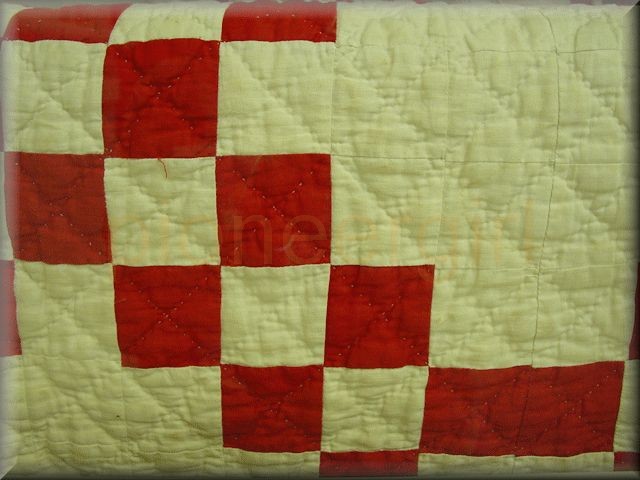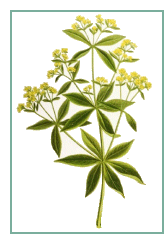Turkey red

A fine, durable red, dyed with madder upon calico or woolen cloth. — Webster, 1882
 In Little House in the Big Woods (Chapter 9, “Going to Town”), Laura Ingalls Wilder writes that Pa teases Ma that he will buy calico for an apron in Turkey red with a “big yellow pattern” unless Ma agrees to pick the calico herself; Ma decides on a “pattern of rosebuds and leaves on a soft, fawn-colored ground.” Why was Turkey red so undesirable to Ma?
In Little House in the Big Woods (Chapter 9, “Going to Town”), Laura Ingalls Wilder writes that Pa teases Ma that he will buy calico for an apron in Turkey red with a “big yellow pattern” unless Ma agrees to pick the calico herself; Ma decides on a “pattern of rosebuds and leaves on a soft, fawn-colored ground.” Why was Turkey red so undesirable to Ma?
Turkey Red – also known as Adrianople Red – has historically been one of the most important and popular colors dyed on cotton. It is a bright red of a bluish tone, characterised by its great durability and fastness to light, washing, etc. Strong alkalies (such as bleach) turn it more yellow, while weak acids and alkalies have little effect on the color. Discovered in India, Turkey red dye long remained a process peculiar to that country. In the Middle Ages, the art was practiced in various parts of Turkey and Greece, especially the neighborhood of Adrianople, hence the name. In the early eighteenth century, Greek dyers brought the process to France, where it prospered. The French were the first to dye fabric in this color; originally, only the yarn to be woven in to fabric was dyed. Obtaining a Turkey red color is a very involved process of a dozen or so time-consuming steps, and no two dyers probably performed the operation in exactly the same way. There are dyers who employ the traditional technique today, and Turkey red fabric resulting from this process quite costly.
The picture above is of a portion of a double nine-patch Irish chain quilt made by Laura Ingalls Wilder and her daughter, Rose Wilder Lane. The It is on display at the Laura Ingalls Wilder Museum in Walnut Grove, Minnesota. While the red material is a Turkey red color, it is not known if this fabric was dyed with madder, using the traditional technique.
The cloth is first steeped for twenty-four hours at 120 degrees, in a weak alkaline lye, containing 4 pounds of potash to every 100 pounds of cloth. it is then boiled with a solution of sodic carbonate, after which it is digested in an imperfect soap lye, composed of Gallipoli oil, sheep’s dung, and a mixture of pearlash and sodic carbonate, in quantity much too small to saponify the whole of the oil. This oiling is repeated four or five times, allowing the cloth to become dry in the air between each immersion. The goods are next subjected to the action of a weak alkaline lye, in order to remove the excess of oil, and to prepare them for the operation of galling. Every 100 pounds of cloth is then immersed in a bath containing twenty-five gallons of water, with 9 pounds of nut galls, and 16.5 pounds of sumach. Having been galled, the cloth next undergoes the process of mordanting; for this purpose a solution of alum, of specific gravity 1.04, to which an equivalent of sodic carbonate has been added, is employed, and in this liquor the cloth is steeped for twelve hours, at a temperature of 100 degrees F. It is then dried and washed. The true process of dyeing is next performed in the madder vat, the proportion of madder varying from 100 pounds to 300 pounds for every 100 pounds of cloth. A quantity of chalk is added to the vat, and a certain proportion of bullock’s blood is employed to clarify the liquid. The next operation is the clearing, or boiling the dyed goods with a weak solution of soap and soda, with the view of discharging the brown tint. The cloth is afterwards boiled under pressure, with a solution of stannous chloride, in order to brighten the color; and finally it is thoroughly rinsed, and dried by exposure on the grass. — William Allen Miller, Elements of Chemistry: Theoretical and Practical (London: Green, Reader, and Dyer, 1867), 700-701.
Madder Root.
 Turkey red owes its brilliant red color to madder, the dried and crushed root of the Rubia tinctorum. Madder-dyed linen has been found on Egyptian mummies, and the red color was still distinct! Native to the Mediterranean and Southern Europe, Rubia can now be found cultivated in India, France, Holland, Italy, and parts of the United States. The madder plant has a long, cylindrical root and several brittle stems. Four to six leaves are arranged in a whorl, with the leaves being two to three inches long. Flowers are small and yellow. Roots for dye are collected from third year roots.
Turkey red owes its brilliant red color to madder, the dried and crushed root of the Rubia tinctorum. Madder-dyed linen has been found on Egyptian mummies, and the red color was still distinct! Native to the Mediterranean and Southern Europe, Rubia can now be found cultivated in India, France, Holland, Italy, and parts of the United States. The madder plant has a long, cylindrical root and several brittle stems. Four to six leaves are arranged in a whorl, with the leaves being two to three inches long. Flowers are small and yellow. Roots for dye are collected from third year roots.
While it is growing, the madder root doesn’t contain any red coloring, but its cells are filled with a yellow substance which increases in quantity as the plant ages. Upon exposure to the air, the red color is developed. The madder is extracted from the root using acids.
Besides being used in its plain red state, Turkey red cloth was used in making bandanas with white or colored patterns upon them. The calico described in Little House in the Big Woods – Turkey red with a big yellow pattern – was probably dyed in the same fashion.

Turkey red (BW 9), see also bandana

